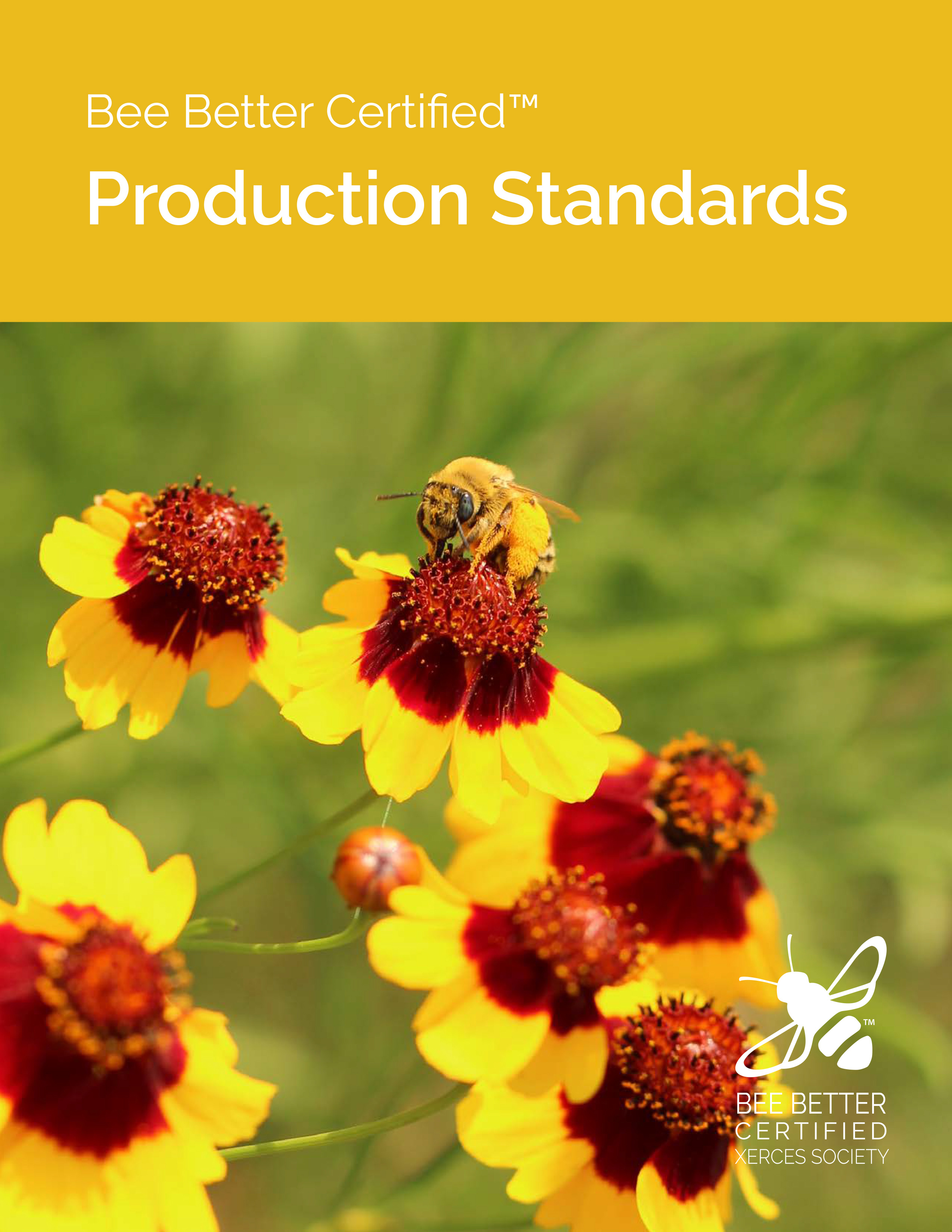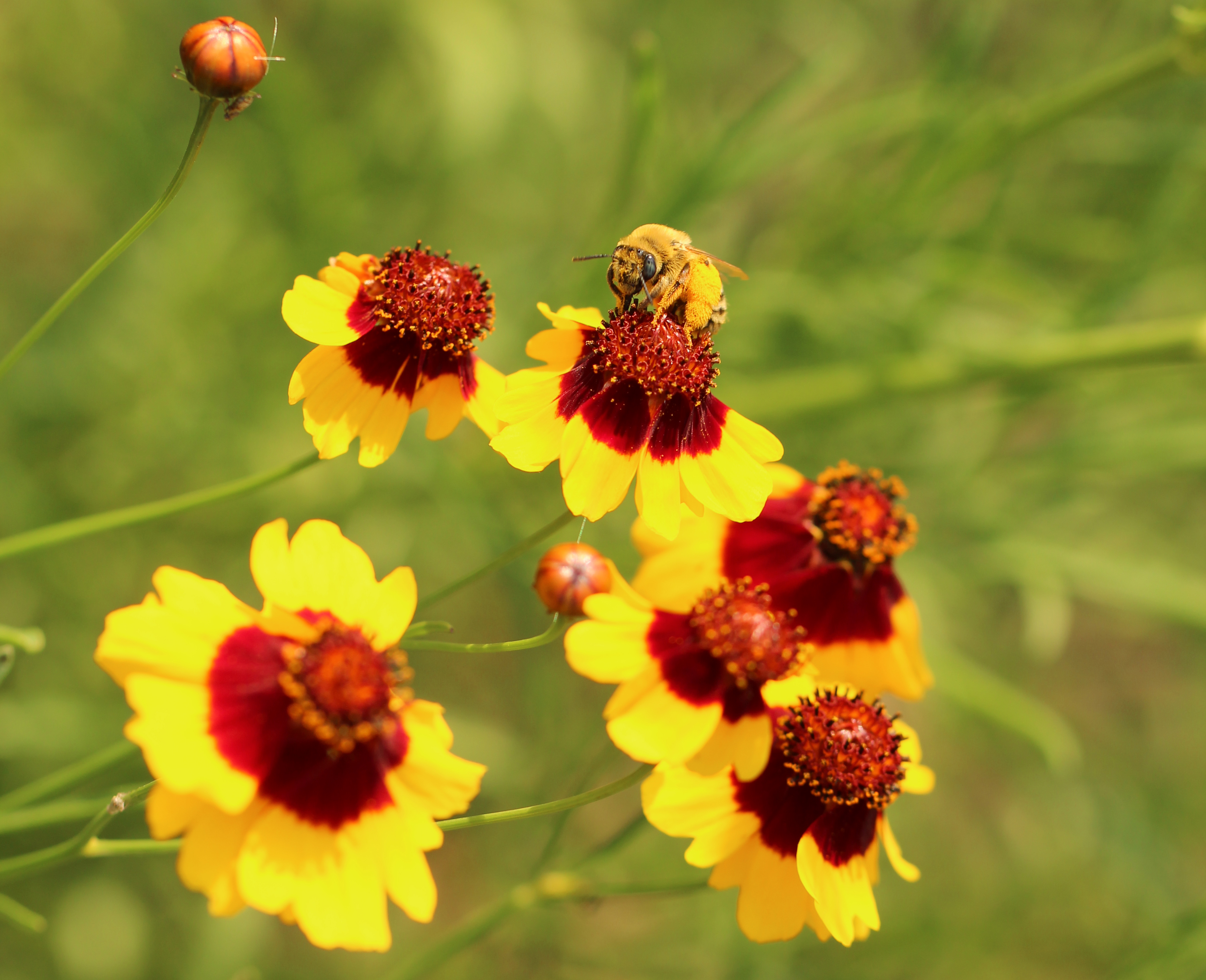After a year and a half of Bee Better Certified®, we have analyzed how the standards work for the many operations that are already implementing them, and have adjusted our requirements accordingly.

As part of Bee Better Certified’s commitment to continued development, we will always be looking back at how we have been doing and identifying ways to improve going forward. After a year and a half of the program, we have had a great chance to analyze how the standards work for the many operations that are already implementing Bee Better standards on the ground. During this time, we have assessed how we can improve the standards to better protect bees, while keeping the process user-friendly for the growers. Going forward, we will be doing an annual review of the standards.
The three standards talked about in this post are some of the larger changes made to the Bee Better Certified standards during this review period; this does not, however, represent all of the changes that have been made. For certified operations and growers looking to be certified, it is best to review the updated version of the standards on the Bee Better Certified website.
Buffer Requirements
The Bee Better Certified standards aim to build healthy places for bees to live, including protecting habitat from pesticides. When a grower commits to the Bee Better Certified standards, they commit to never using nitroguanidine neonicotinoids on certified land, and to setting aside no-spray areas (buffers) around permanent pollinator habitat.
What we discovered is that, while our certified growers were doing amazing work to protect these buffer areas, they can’t control what a neighbor does. For example, a Bee Better Certified farm might locate pollinator habitat near a neighbor’s organic pasture with the understanding that their habitat is in a protected location. However, when the neighbor decides to replant crops in that pasture and potentially use pesticides, we needed to ensure that the Bee Better Certified Farm would still be rewarded for the good work they are doing, while also maintaining a buffer that protects bee habitat from a neighbor’s actions.
With this in mind, and after a review of the science and consideration of many farm systems, we decided to standardize the buffer distance for neighboring lands, and make it consistent with Organic certification—the most trusted farming standard. Now, just like the National Organic Program (NOP) requirements, Bee Better Certified farms will need to maintain a minimum 30-foot buffer between habitat and neighboring lands—where pesticides might be used. Within the Bee Better Certified Farm itself, even stricter buffer requirements remain in effect for permanent habitat areas, including no ground-based use of pesticides within 40 feet of habitat areas, no air blast applications of pesticides within 60 feet of those habitat areas, and no use of nitroguanidine neonicotinoid insecticides, period.
Aerial Application of Fungicides
After a review of the science, grower feedback from many parts of the country, and some input from our industry experts on the advisory board, we have determined that in some circumstances, ground-based fungicide applications may be more problematic than aerial applications. For example, under wet conditions, the use of heavy ground application equipment can have the potential to damage soil structure by causing compaction or by increasing erosion. Because soils are essential to crop health and biodiversity, we strive to protect this vital resource. One simple change we made in the Bee Better Certification requirements was to provide flexibility for the aerial application of fungicides, allowing it under certain circumstances. (Aerial spraying of insecticides and herbicides are still prohibited under Bee Better.) In making this change we consulted with a number of experts, including aviation experts, to create a strong framework for drift prevention, and stringent protective measures including a 60-foot buffer around permanent pollinator habitat areas.

Bloom Time Applications of Fungicides
Previously under the Bee Better Certified standards, it was prohibited to make foliar applications of certain DeMethylation Inhibitors (DMI), multi-site contact activity, or carboxamide fungicides during bloom for crops visited by bees. After careful review of this standard and the research available, it was determined these classes of fungicides are allowable when certain cultural practices [JD1] are implemented on certified land. This decision has been made due to the original standard being developed under the precautionary approach, and due to the overwhelming feedback that we have received from certified growers stating that they need fungicides under certain challenging situations. As a result, fungicide during pre-bloom (the period 10 days before bloom) and/or bloom time is now allowed if at least one non-chemical pest management practices is also used to directly address the fungal concern prompting the application. A list of these practices can be found in the revised standards along with guidance on developing a plan for scouting and monitoring for fungal pathogens.

Final thoughts
The aim of the program is to find the balance between maximum protection for bees in agricultural landscapes, and ease of use and adoption of the program and standards for growers. At the end of the day, we want to build as many healthy places for bees to live in agricultural landscapes as we can—and as the needs of growers and the understanding of the effects of management practices continue to change, so too will our standards.
Further Reading
Learn more about Bee Better Certified.
Learn more about the Xerces Society’s Pollinator Conservation Program.




